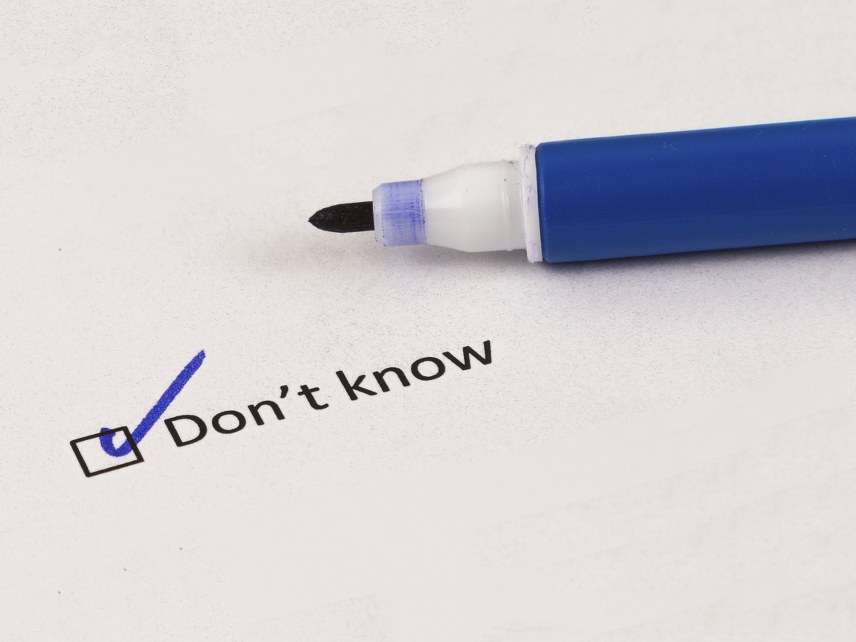California's Top-Two Voting System Keeps Leaving Voters Without Options
Given only two candidates from the same party, millions just don't choose at all.

California saw a huge voter turnout in November, with nearly 13 million ballots cast. About 65 percent of the registered voters participated, the biggest numbers for the state in a midterm election in a decade.
That sounds like a big win for democratically elected representation, but there's more than one way to disenfranchise a voter. California's top-two voting system for state officials and for state and federal legislators creates a system where many voters only get to vote between candidates from the same political party for some seats.
In California's top-two system, voters get to choose from a slate of all candidates from all parties in the primaries. The two candidates with the most votes, regardless of which party they belong to, face off in the fall election. Those who sold this election system to voters (it was approved via ballot initiative in 2010) insisted that it would make races more competitive because candidates would be pushed to try to appeal to a wider base of voters.
But it isn't actually making for more voter engagement. Instead, millions of voters are simply not casting votes in many major races, and by looking at the numbers, it's very clear that the lack of actual choice is playing a role.
The Los Angeles Times sorted through the latest numbers. Only two percent of those who voted in California declined to choose one of the gubernatorial candidates. Voters had both a Democrat and a Republican to choose from in that race. For lieutenant governor, Californians had a choice between two Democrats and that's it. In that race, more than two million voters, or 18 percent, declined to pick a candidate. In previous elections where there was interparty competition, 95 percent of voters cast a ballot for lieutenant governor.
The Times noted similar drop-offs in every race in the state where voters only had the choice between two Democrats and only in those races. Even California's Senate race saw 13 percent of voters deciding not to bother to choose between incumbent Democrat Sen. Dianne Feinstein and also-Democratic challenger Kevin de Leon.
We saw similar drop-offs in the 2016 presidential election, where Democrat Kamala Harris defeated also-Democrat Loretta Sanchez. Nearly two million voters who cast ballots didn't bother with either of them.
It's fascinating how much less interested people are in exploring this phenomenon than if, say, 10 to 20 percent of voters had their ballots tossed out or their votes somehow discounted. There's plenty of attention on mechanisms used by political parties to keep people from voting at all in order to influence the election results. But there is much less attention given to the fact that states like California game the system in such a way that many voters don't get choices to begin with.
Somewhat mystifyingly, the Times describes this top-two system as having the support of California voters based on a single poll that only gives people the choice between this system, the old closed system (you had to be a member of the party to vote in its primary), and a mixed system where independents could decide which party's primary to participate in. Given just those three options, 50 percent preferred the current top-two primary system.
Bafflingly, Times Sacramento Bureau Chief John Myers presents these numbers as indication that California voters are "happy" with this system.
But 50 percent support for an election system actually represents terrible numbers. It is nothing to brag about and certainly not justification for maintaining a system. It means half of all Californians don't like this current system. Compare that to the new ranked-choice voting system implemented this year in Maine, which introduced that system to some of its primary races and in polling after its first use, 90 percent said the experience was "excellent" or "good."
Maine's system also has the advantage of allowing people to support independent and third-party candidates come the fall. In California, they aren't even on the ballot in November unless they leap the very high hurdle of surpassing both Democrat and Republican candidates in the primary.
That the poll only asked Californians to compare the current primary system to previous primary systems within the state and not other potential options indicates a lack of a grasp on the full problem. Of course half the voters would like it. It's probably the half that gets to choose between two candidates they largely agree with and completely locks out candidates they don't like. Why should those voters care about who gets disenfranchised from voting in particular races?

Show Comments (56)